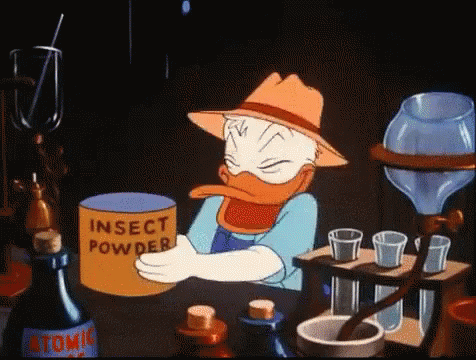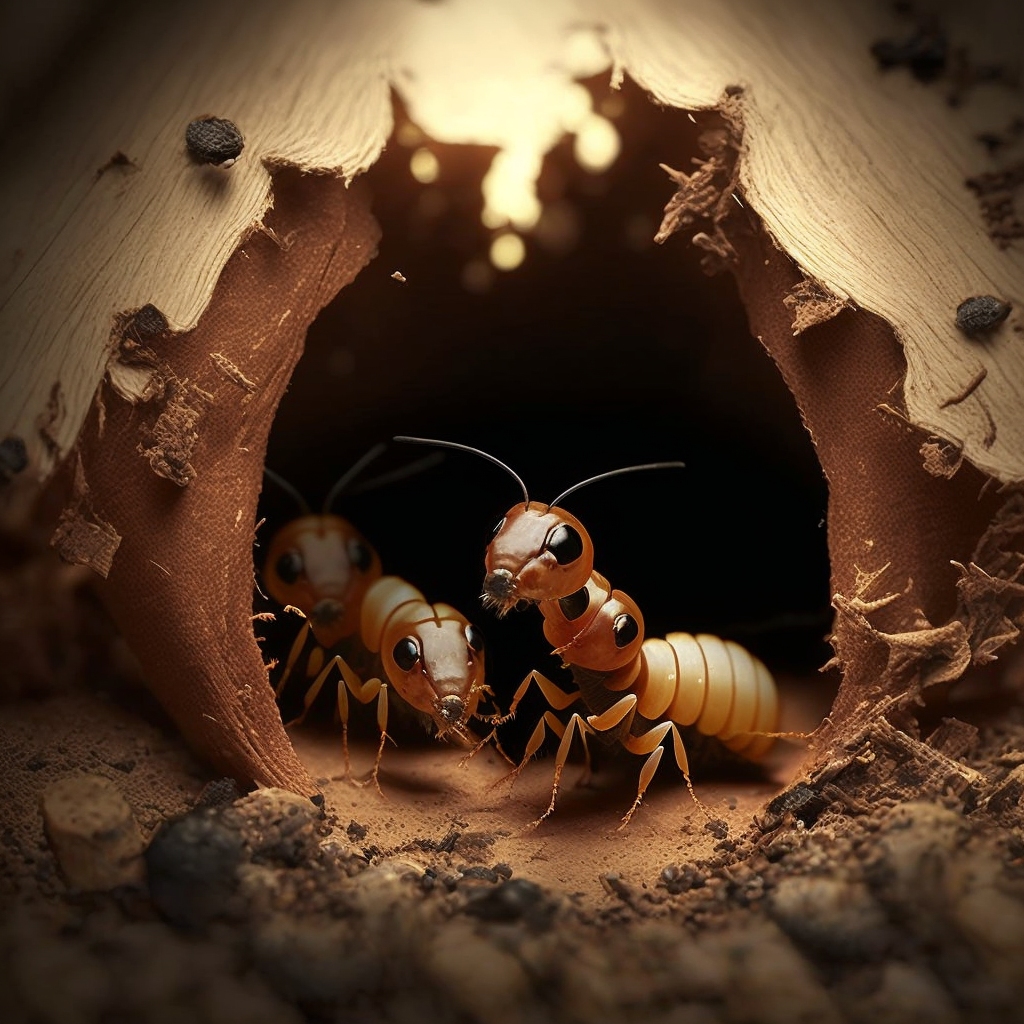What Is Termite Poop and what does It Look Like
- What Are the Signs of a Termite Infestation
- Is Termite Poop a Sign That You Have An Infestation
- How To Get Rid Of Termites Using Natural Methods
- Prevention Tips to Keep Your Home Safe From These Pest
- How Do You Know If You Have a Termite Problem
- How Do You Get Rid Of Termites
- What Are the Risks of not Getting Rid of Termites
- How Much Does It Cost To Get Rid Of Termites
Termite poop, also called frass, is made up of tiny pellets that vary in color depending on the type of wood they have consumed. In general, it is usually a dark brown or black color. Termite droppings are small and look like sawdust or coffee grounds.
They can also resemble small pieces of charcoal and have an earthy smell to them. When termites eat wood, their droppings contain undigested particles from the wood which makes the frass appear slightly granular.
Interestingly, these pellets are not only composed of wood material but also contain fragments of soil and other debris from the area where the termites live.
This helps to identify different types of termite infestations based on the composition of their droppings. As termites feed on the wood, they are expelled as fecal pellets that contain both cellulose residues and fragments of soil and debris. This mixture is known as frass or termite droppings.
Frass also contains a number of chemicals that help to identify the type of infestation such as nitrogen, carbohydrates, lipids, and proteins which can be used to determine whether drywood or subterranean termites are present in an area.
To confirm if there is an active infestation in your home, it is best to call a professional pest control company for inspection. They will typically look for signs of frass near walls and other areas where termite activity may be occurring.
What Are the Signs of a Termite Infestation
If you suspect a termite infestation, there are certain signs to look out for. The most common sign of termites is the presence of mud tubes on exterior walls or wooden surfaces in your home.
Mud tubes are created by termites as they travel between their nests and food sources. They provide moisture and protection from predators while they search for wood to feed on.
Signs of a potential termite infestation may include:
- Swarms of winged insects near windows, doors and other points of entry to the building
- Discarded wings near window sills or door jams after swarming season
- Mud tubes on walls, wooden beams, or foundations that are built by termites as they move between their colony and food sources
- Hollow sounding wood when tapped with a hard object. This is an indication that the wood has been compromised by termites feeding inside it
- Sightings of live termites in basements or crawl spaces
- Damaged wood – such as buckling floors, warped ceilings and walls, and other structural damage
- Small holes in the wood with bits of sawdust nearby. This is a sign that the termites are creating tunnels and galleries within the wood.
Other indications of an infestation include discarded wings near windowsills or other areas where light may enter the home, piles of sawdust-like material near baseboards or walls that could be caused by wood damage from feeding termites, and hollowed or brittle wood around windows and doors or other places where wood is present in your home.
It’s important to be aware of the signs and take action quickly to avoid major damage to your home.
If you suspect a termite infestation, contact a pest control professional for an inspection to confirm the presence of termites and develop an effective treatment plan.
Early detection and treatment are essential to thoroughly eliminating a termite infestation.
In addition, it’s important to check for any other environmental conditions that could be attracting termites to your home such as moisture buildup or lack of ventilation in certain areas.
Taking proactive steps now can help limit the damage from a potential infestation in the future.
Is Termite Poop a Sign That You Have An Infestation

Termite droppings, also known as frass, are an indication that you may have a termite infestation in your home or business.
Frass is composed of the wood particles and feces left behind after termites eat their way through wood structures. It is typically found near the edges of walls, wood furniture, and other wooden surfaces where termites feed.
When inspecting for a possible infestation, look for signs such as sawdust-like piles near walls, broken wings from swarmers flying around inside the building (which indicates they are looking to start new colonies), or mud tubes running along the foundation walls or floor joists of your building.
Termite droppings can be identified by their six-sided shape and small size. If you notice any of these signs, it’s important to contact a pest control specialist right away.
Don’t wait until the problem worsens or spreads before you take action. A certified pest management professional can assess the damage and determine the best treatment plan for your situation.
By taking swift action, you can avoid potential costly repairs and keep your property safe from further damage caused by termites.
It’s also important to remember that prevention is key when it comes to termite infestations. Taking measures such as sealing cracks in foundations, reducing moisture levels in crawl spaces, fixing plumbing leaks and removing dead tree stumps around your home can all help reduce the risk of an infestation.
Additionally, having your home inspected regularly by a professional can help you catch any early signs of termites before the problem worsens or spreads.
How To Get Rid Of Termites Using Natural Methods

If you have been unfortunate enough to find termites on your property, it is important to take action as soon as possible.
When left untreated, they can cause serious damage to the structure of your home or building. There are several methods available for treating an infestation of termites that range from natural treatments to professional help.
For those looking for a more natural approach, one option is using boric acid in dust form and sprinkling it around any infected areas.
Boric acid works by dehydrating the exoskeletons of the pests, killing them in the process. You may also be able to contact local pest control experts who use more eco-friendly methods such as heat chambers and liquid barriers which will effectively prevent termites from entering your home or building.
Some professional pest control companies may offer a more comprehensive approach to termite extermination, where they can treat the entire structure of your home or building when an infestation is severe.
This includes injecting termiticides into the soil and treating wooden structures with specialized insecticides.
These methods are highly effective in removing termite colonies completely, but can be quite costly and time consuming.
It’s important to remember that prevention is key when it comes to termite infestations – so make sure you keep up on regular maintenance such as sealing cracks and crevices around the house, checking for signs of winged insects (which could indicate a possible colony) as well as any other warning signs that may suggest an infestation.
Prevention Tips to Keep Your Home Safe From These Pest

It is important to keep your home pest-free in order to avoid the damage and health risks associated with them. Here are some prevention tips that you can use to keep your home free from these pests:
- Regularly inspect your home for potential entry points. Pests like termites and rodents find their way into homes through cracks, holes, and other small openings. Sealing up any of these entry points with caulk or steel wool can help prevent infestations.
- Keep food sources away from pests by storing all food items in airtight containers and regularly cleaning up crumbs or spills on floors and countertops. Additionally, make sure to empty trash cans frequently.
- Eliminate any standing water near your home, as this can be an attractive area for mosquitos and other pests. Make sure all faucets are securely sealed and that gutter systems are clean and functional so they don’t collect water in the vicinity of your home.
- Regularly inspect plants growing in or around your home for signs of infestation since some pests like aphids and termites feed on them. Additionally, trim bushes so there is no foliage touching the exterior walls of your home as this could provide an entry point for pests.
- Have a professional pest control company come to inspect and treat any potential areas where pests can enter your home. Experts can use baits, traps and insecticides to control any existing infestations in your home or yard.
How Do You Know If You Have a Termite Problem

One of the most common ways to tell if you have a termite problem is the presence of mud tubes. Termites will build these mud tubes up walls and across floors, which are used as pathways between their nests and food sources.
They can also be found in crawlspaces, basements, and around foundations. Another sign of a potential infestation is signs of damage to wood or other cellulose-based materials such as paper or cardboard.
This could include tunnels in furniture, floorboards with hollow centers, buckling paint on walls, or droppings from termites that look like sawdust or small pellets. If you see any of these signs, it’s important to contact an exterminator for proper identification and removal immediately. Severe infestations can cause structural damage to your home, so it’s important to act quickly.
Finally, winged termites, known as alates or swarmers, are another indication of a potential infestation. Alates will swarm from their nest during certain times of the year in order to reproduce and start new colonies.
If you see swarms of small flying insects near your home, particularly on warm days after rainfall, you should consider calling an exterminator to investigate further.
How Do You Get Rid Of Termites

When it comes to getting rid of termites, there are a few different methods available.
The most common methods include chemical treatments, baiting systems, and heat treatment. Chemical treatments are typically used as a preventative measure to keep termites away.
This involves applying a termiticide directly to the soil around and under your home, as well as the foundation of any outbuildings on your property.
Baiting systems involve placing bait stations in areas where termites are likely to feed, such as near wood piles or stumps.
The baits contain insecticides that will kill the termites when they consume it. Heat treatment is also an effective way to get rid of termites, as temperatures above 130°F can effectively kill them and their eggs.
Whichever method you choose, it’s important to be sure that all entry points for the pests have been sealed off so that new colonies do not form.
Additionally, removing sources of food (such as wood) from your property can help to discourage termites from returning.
To be sure that the problem has been fully eliminated, it’s best to consult with a qualified pest control professional.
They will be able to inspect your property and advise you on the most effective way of getting rid of termites in your area. With their expertise, you can rest assured knowing that your home or business is free from these destructive pests.
What Are the Risks of not Getting Rid of Termites

Termites can cause significant damage to your home if left untreated. They can chew through wood and other materials, weakening the structural integrity of your house.
Termite infestations can also lead to a variety of other issues such as contaminated soil, leaking pipes and increased humidity levels in the home.
Furthermore, if you don’t get rid of the termites quickly and properly, they may spread to the surrounding areas creating even more destruction.
This could result in costly repairs or replacements that may not be covered by insurance. It’s important to act quickly if you suspect a termite infestation and take steps to protect your home from further damage.
Some ways you can do this include sealing any cracks or openings in walls and floors, removing excess moisture from the home, and using termite baits and sprays to control the infestation.
By taking proactive steps, you can help prevent further damage and costly repairs down the road.
In addition to property damage, not getting rid of termites can also pose a threat to your health. Termites produce waste droppings, which contain dust particles that may lead to allergic reactions or respiratory problems if inhaled.
If left unchecked, their infestations can attract other pests such as cockroaches or ants into your home, which may carry harmful diseases.
Furthermore, the presence of these pests in your home could cause psychological distress due to fear and anxiety about the potential health risks posed by them.
How Much Does It Cost To Get Rid Of Termites

The cost of getting rid of termites will depend on the size and severity of the infestation as well as the method used to exterminate them.
Generally speaking, extermination costs range from a few hundred dollars for minor infestations, up to $3,000 or more for extensive damage caused by large colonies.
If you have an active termite infestation in your home, it’s best to consult with an experienced pest control professional who can assess the situation and recommend an effective solution.
The expert may choose to use chemical or bait treatments, which are typically less expensive than other methods such as fumigation. In some cases, replacing sections of wood that have been damaged by termites can be enough to solve the problem.
Whichever approach is taken, the pest control expert will likely recommend follow-up visits to make sure the infestation has been completely eradicated.
Depending on the extent of damage and required treatments, it can take several visits before your home is termite-free.
The cost of getting rid of termites is not something anyone looks forward to hearing about, but it’s important to take action quickly if you suspect an infestation in your home.
Catching and treating a problem early can help prevent extensive damage that could be very costly to repair.
Taking steps like regularly inspecting your home for signs of activity and eliminating sources of food or shelter that attract pests can help keep your house termite-free.
If you do find that you have a problem, the cost to get rid of termites can range from several hundred dollars up to thousands depending on how bad the infestation is.



